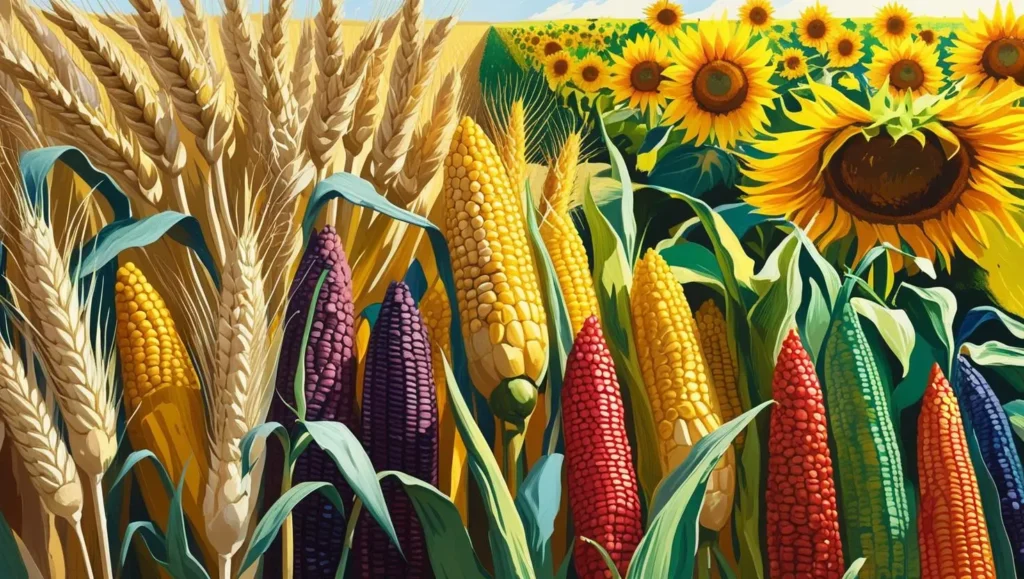Discover Profitable Crops in America’s Farming Regions
The United States is one of the world’s agricultural powerhouses, thanks to its vast and varied landscapes. From the fertile plains of the Midwest to the sun-drenched valleys of California, the diversity in climate and soil means different regions excel at growing specific crops. Understanding which crops thrive—and are most profitable—in each region can help farmers maximize their yields and income.
In this post, we’ll explore the most profitable crops grown across America’s diverse regions and what makes each area unique.
1. The Midwest: America’s Breadbasket
The Midwest is famously known as the “Corn Belt.” This region dominates U.S. agriculture with key crops like corn and soybeans. These crops are highly profitable. They meet huge demand for food, livestock feed, and biofuels.
Corn is the star here. It’s used in many ways—food products, ethanol fuel, and animal feed. States like Iowa, Illinois, and Nebraska grow massive amounts of corn every year.
Soybeans are another essential crop. They are versatile and rich in protein, making them valuable for both food and industrial uses. Illinois and Indiana are among the top soybean producers in the region.
What makes the Midwest perfect for these crops? It’s the combination of rich, fertile soil and moderate rainfall. These conditions create an ideal environment for growing large-scale row crops year after year.
2. The South: Cotton and Specialty Crops
The South enjoys a warmer climate than many other regions. This means longer growing seasons and more opportunities for diverse crops. As a result, farmers can grow a wide variety of profitable plants.
Cotton has long been important to the South’s economy. It remains a major cash crop, especially in states like Georgia, Mississippi, and Texas. Cotton farming supports many communities and industries.
Peanuts are another southern specialty. They’re especially profitable in Georgia and Alabama. Peanuts are widely used in food products and snacks, making them a steady source of income for farmers.
Tobacco farming has declined over the years, but it still holds economic value. North Carolina and Kentucky continue to produce tobacco for domestic and international markets.
Beyond these, the South also grows many fruits and vegetables. Sweet potatoes, peaches, and watermelons are popular crops that contribute to both local markets and national food supply chains.
3. The West: Diverse and High-Value Crops
The Western United States is known for its diverse climates. This variety allows farmers to grow a wide range of high-value crops. Each area has its own specialties that contribute significantly to the economy.
California’s Central Valley is often called the nation’s salad bowl. It produces billions of dollars’ worth of almonds, grapes, citrus fruits, and vegetables every year. The fertile soil and long growing season make it ideal for these crops.
In the Pacific Northwest, cooler and wetter conditions prevail. This region is famous for growing wheat, apples, and potatoes. The climate here suits these crops perfectly.
In states like Colorado and New Mexico, farmers grow specialty crops such as hops and chili peppers. These crops serve niche markets and are highly sought after for craft beers and spicy cuisine.
Because much of the West is dry, irrigation is essential. Advanced irrigation systems help water crops and keep them healthy even in areas with limited rainfall. This technology allows Western farmers to maximize their yields despite challenging conditions.
4. The Northeast: Small-Scale and High-Value Farming
Though farming in the Northeast is smaller in scale compared to other regions, it offers many profitable opportunities. Specialty and organic farming are especially strong here.
Maple syrup production is a standout industry. Vermont and New York lead the nation in making this sweet, iconic product. Maple syrup is cherished both locally and across the country.
The Northeast is also famous for its high-quality dairy farms. These farms produce milk, cheese, and yogurt that are known for their rich flavor and freshness.
Farmers in the region grow a variety of specialty fruits and vegetables, including apples, berries, and greenhouse-grown produce. Many of these are marketed as organic or local, attracting customers willing to pay premium prices.
One big advantage for Northeast farmers is their proximity to large urban markets. Being close to cities means they can sell fresh, high-quality products directly to consumers and businesses, often at higher prices.
Why Crop Diversity Matters
The strength of American agriculture comes from its incredible diversity. Different regions have unique climates, soils, and resources. This means each area is suited to growing certain crops better than others.
By choosing the right crops for their specific region, farmers can boost both productivity and profits. Growing crops that naturally thrive in local conditions reduces the need for extra resources like water and fertilizers. This approach also supports more sustainable farming practices.
Matching crops to regions isn’t just smart business—it helps protect the environment and ensures farming can continue for generations to come.
Final Thoughts
Understanding the strengths of different crops in each region is essential. This knowledge helps farmers make smart decisions about what to grow. It also guides investors looking to support agriculture and anyone interested in America’s farming future.
From the vast cornfields of the Midwest to the thriving vineyards in California, each region has its own unique role. These farms don’t just feed local communities—they help nourish the entire nation and even the world.
By appreciating these regional differences, we can better support sustainable growth and continued success in American agriculture.
What crops grow best in your region? Share your experiences or questions in the comments!

Silvia Heart is a lifestyle and wellness writer with a background in apparel and a degree in fashion. She blends creativity with practical insights, guiding readers toward intentional, balanced living. Through her approachable style and thoughtful storytelling, Silvia inspires her community to embrace both everyday joy and personal growth.


